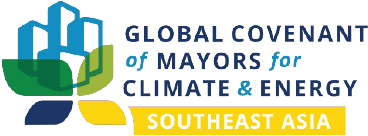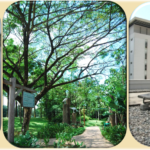Seberang Perai: Resilient, Inclusive, Green, Competitive & Technology Driven Smart City
By: Ahmad Zabri Mohamed Sarajudin, Director of Crisis Management Department, Seberang Perai
Date: June 1, 2019

With a land area of 751 km2, Seberang Perai City is a part of The State of Penang in Malaysia. The City has initiated the low carbon strategy in transportation, building, industrial and infrastructure sectors—in its social and economic development path.
The City’s Vision, “Resilient, Inclusive, Green, Competitive and Technology Driven Smart City” has shaped its Strategic Plan and Corporate Priorities. Seberang Perai’s measures in inclusive low carbon development further seeks to maintain its economic competitiveness while also attaining resilience and Carbon Neutrality by 2030.
Best Practice Component
| Key Climate Management Challenges | · Flood (heavy precipitation) which has caused tens of millions (Malaysian Ringgit) of loss, affected 170 thousands people, and property and environmental damages.
· Low carbon development to support resilient, industrial growth and economically competitive City |
| Policy and Governance related to the Activity/ Program | Anchored in policy documents, Strategic Plan of Seberang Perai 2018 – 2022 and Seberang Perai Corporate Priorities, the City has been modeling its future on the low carbon development, which enables a green, resilient, inclusive and economically competitive paths.
Seberang Perai’s LOW CARBON CITY has been defined by the Mayor as: “… a city that are able to provide urban development within the city limit without compromising the needs of its people and at the same time are able to control the greenhouse gases emission level below global average”. (Dato’ Sr. Hj Rozali Mohamud, Mayor of Seberang Perai). Seberang Perai’s Low Carbon City “Greenprint” rests on the City’s trajectories in Greenery and Sequestration, Low Emission Transportation, Low Emission Building, Low Emission Consumption and Production, and Low Emission Infrastructures.
|
| Stakeholders and Affiliations | Seberang Perai City Government, Residents of the City
Affiliation · Global Covenant of Mayors for Climate and Energy |
| Financing of the Activity / Program | |
| Beneficiary and Number benefitted | Community and Local Business sectors of the City |
| Methodology, Tools and Mechanisms
|
STRATEGIC PLANNING · SHORT TERM (2018 – 2020): Dissemination of information and awareness on Low Emissions Development· Develop Guidelines, Baseline Study, Monitoring, Measurement and Verification.· MID TERM ( 2018 – 2022) : Meeting the Target of 2022 of 50% reduction of per capita emission. · LONG TERM (2018 – 2030) : Meeting the Target of 2030 of Carbon Neutrality
TOOLS · Consultation on Community’s Prioritisation in City Government’s Types of Services · Budget Dialogue with community on City Government’s Priority Services |
| Technologies used by, and Technological aspects | · Green building
· Solid waste management |
| Targets, Results and Achievements | The City is targeting per capita emission reduction from 2016 level by 21 % in 2019 and 42% by 2022.
|
| Key Factors Contributing to Success | · Strong political commitment in low carbon development, the City’s Strategic Plan and Corporate Priorities documents.
· Low carbon strategy by means of greenery and sequestration and low emission transportation, infrastructure, building, and consumption and production. · Inclusiveness as part of stakeholder engagement strategy, through consultation and dialogue. |
| Sustainability Issues and Challenges in the Activity/ Program |







